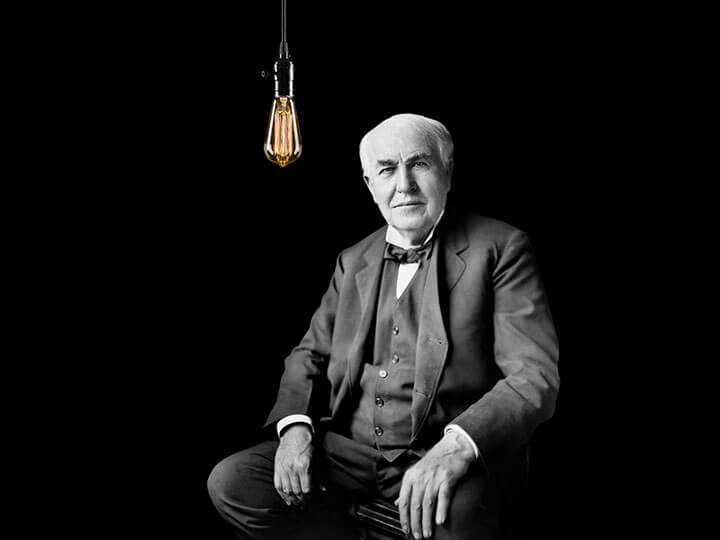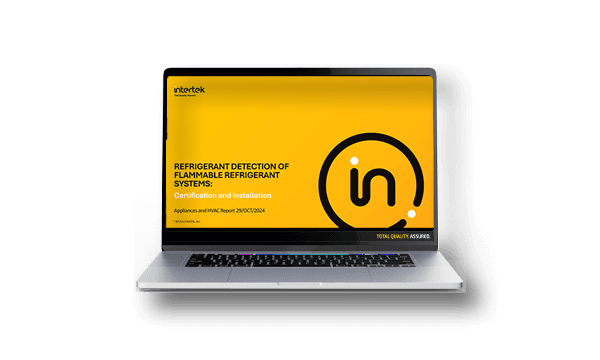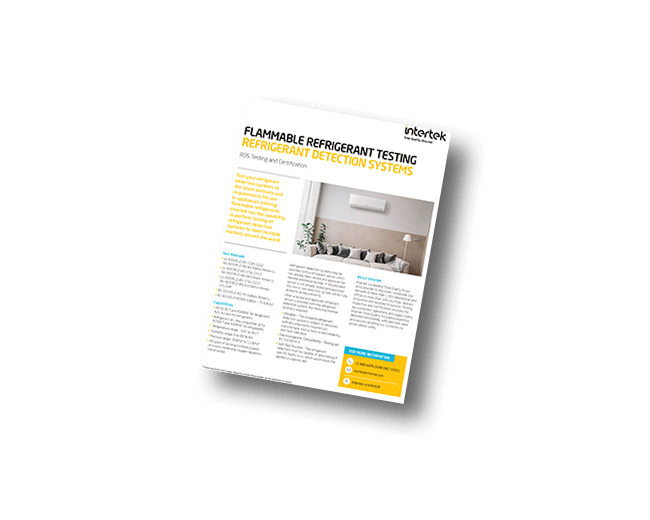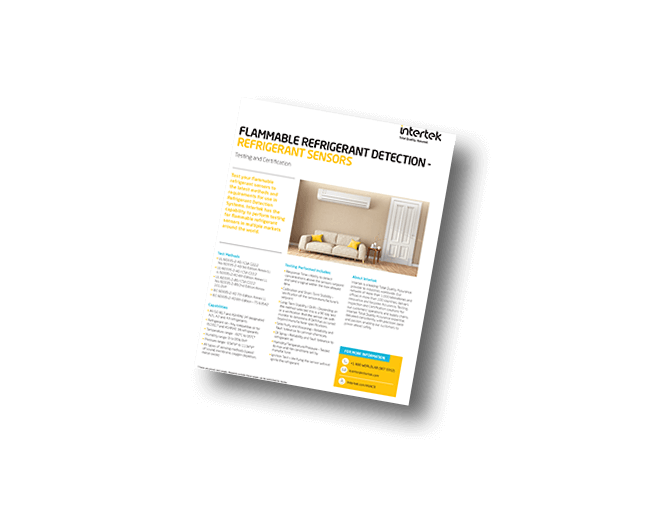Refrigerant Leak Detection Systems
HVAC and Refrigeration appliances that utilize a flammable refrigerant classified A2, A2L, or A3 may require Refrigerant Detection to meet installation code requirements. If Refrigerant Detection is provided with these appliances, they must meet all the design and test requirements provided in the latest industry safety standards.
Currently, compliance of refrigerant detectors for flammable refrigerants in HVAC appliances is determined with UL 60335-2-40, Annex LL and for commercial refrigeration appliances compliance is determined with UL 60335-2-89, Annex 101.DVP. The purpose of these tests is to determine that a sensor initiates an output as intended, as quickly as intended, doesn't send an output falsely, and isn't vulnerable to certain types of physical, chemical or electrical damage that could affect the operation of the sensor.
With the latest publication of UL 60335-2-40 standard, there are numerous updates to the tests which may impact the compliance of refrigerant detectors currently in production.
Frequently Asked Questions
Intertek has an ETL Recognition certification program for Refrigerant Sensors and Refrigerant Detection Systems according to the requirements of Annex 101.DVP within UL 60335-2-89 and Annex LL of UL 60335-2-40. Either of these standards may be used to determine compliance of a Refrigerant Detection System in a UL 60335-2-89 ETL certified appliance. Intertek recommends using Annex LL of UL 60335-2-40 because it has the latest updates to the test methods required for Refrigerant Sensors and Refrigerant Detection Systems. Recognizing these sensors and detection systems under the ETL mark provides a faster path for certification of any Refrigeration appliance that uses them for refrigerant leak mitigation.
Intertek uses the latest published version of UL 60335-2-89 and UL 60335-2-40.
The Refrigerant Detection System is comprised of the refrigerant sensor and electric circuit controls which provide an output signal known as the “System Response” to activate the necessary mitigation actions in the event of a refrigerant leak. All cabling between the sensor and circuit controls must be tested for vibration and Electromagnetic Compatibility. Brackets and mounting means of the sensor and cabling must also be evaluated for required testing. Intertek will perform an Engineering Review of the proposed Refrigerant Detection System design to determine which components must be tested.
For ETL Recognition of a Refrigerant Sensor or Refrigerant Detection System, Intertek implements the latest published version of UL 60335-2-89 Annex 101.DVP or UL 60335-2-40 Annex LL which has been approved by the industry. For ETL Certification, Intertek issues its own decisions on any corrections or clarifications to a standard through Engineering Judgments and Notifications. Except for allowing UL 60335-2-40 Annex LL recognized Refrigerant Sensors and Refrigerant Detection Systems to be used in ETL Certified UL 60335-2-89 appliances, Intertek has not created any such decisions for Annex LL of UL 60335-2-40 4th Edition which are similar to the UL CRDs dated 2023-10-09 for UL 60335-2-89 or 2023-10-10 for UL 60335-2-40. There are ongoing discussions within the industry and Technical Committees regarding major changes to the established and published test methods under the existing accredited standard. Intertek is actively engaged with the industry on all work and discussions on these proposed changes and will wait for these completed changes to be voted on and approved by the industry through accredited committees before it sets an effective date to begin certifying with these new test methods.
Intertek Engineers will evaluate all models submitted for certification to determine the appropriate test plan that covers required testing for all possible combinations of sensor and controls for detection and output of a system response. Testing will be condensed where possible to cover the full range of manufacturer declared capabilities.
A Refrigerant Detection System is not required to be evaluated as a Protective Electronic Control (PEC). This decision for ETL Recognition is based on the decisions which have been thoroughly debated and documented within the international and North American technical committees. Discussion on the application of PEC requirements are ongoing and Intertek will continue to use the latest published standard when determining what components and assemblies must be subjected to PEC evaluations.
Software used in a Refrigerant Detection System, or a Refrigerant Sensor does not have to comply with the requirements of UL 60335-1 Annex R. Software of a senor or RDS is covered by the testing performed throughout Annex 101.DVP of UL 60335-2-89 or Annex LL of UL 60335-2-40. Intertek will only document the version of software in the RDS or sensor during testing to Annex 101.DVP or Annex LL. Any updates to the software after testing require an update to the version that is documented in any ETL certification reports. Software updates will be reviewed to determine if the changes require no testing, limited testing, or full retesting to Annex 101.DVP or Annex LL.
Intertek can provide a list of information that is needed specific to each certification.
UL 60335-2-89 Annex 101.DVP and UL 60335-2-40 Annex LL allow a Refrigerant Sensor to be tested independently of other components comprising the RDS, but the final assembly of the RDS must still be tested as a completed assembly to evaluate the required system response and testing that is specific to the entire RDS assembly. A recognized Refrigerant Sensor must be reviewed for conditions of acceptability that are documented in the certification report. Depending on the conditions of acceptability limited retesting is required per Annex 101.DVP or Annex LL. In general, the minimum testing that is required for testing an RDS that utilizes a recognized sensor are system response, vibration, and EMI (EMC) testing. These are typical tests, but if the conditions of acceptability for a recognized sensor require additional testing based on how it is used in the RDS, Intertek will document and explain the reason for these tests in a proposed test plan.
A Certified RDS which has been recognized to Annex 101.DVP of UL 60335-2-89 or Annex LL of UL 60335-2-40 is treated like any other type of recognized component or subassembly in the end product appliance. The RDS recognition will have conditions of acceptability that must be followed for further evaluation of the system design and any required additional testing that must be performed. If any additional testing of the RDS is required, Intertek will document and explain the reason for these tests in a proposed test plan.
Knowledge Center
Flammable Refrigerants Testing: Refrigerant Detection Systems
ETL Certification Mark: HVAC/R Compliance to National Standards
HVAC Consulting Services with Intertek Assurance
UL 60335-2-40 Refrigerant Leak Detection Systems
Safety Certification Effective Dates for HVAC/R Equipment
Cybersecurity Certification for HVAC/R Equipment
Transitioning HVACR Equipment to UL/CSA 60335-2-40: Webinar | White Paper
EPA SNAP Rules and Certifying Appliances with Alternative Refrigerants
Guide to Flammable Refrigerant Mitigation
Scope of Intertek’s HVAC/R Capabilities | Poster
For more expert papers, recordings, and presentations, visit our HVACR Resources hub.

Thomas Edison’s Legacy
Thomas Edison and innovation go hand in hand. His ground breaking inventions in the 19th century introduced the world to sound recording and playback, motion pictures, electric light, and the practicality of product testing.



